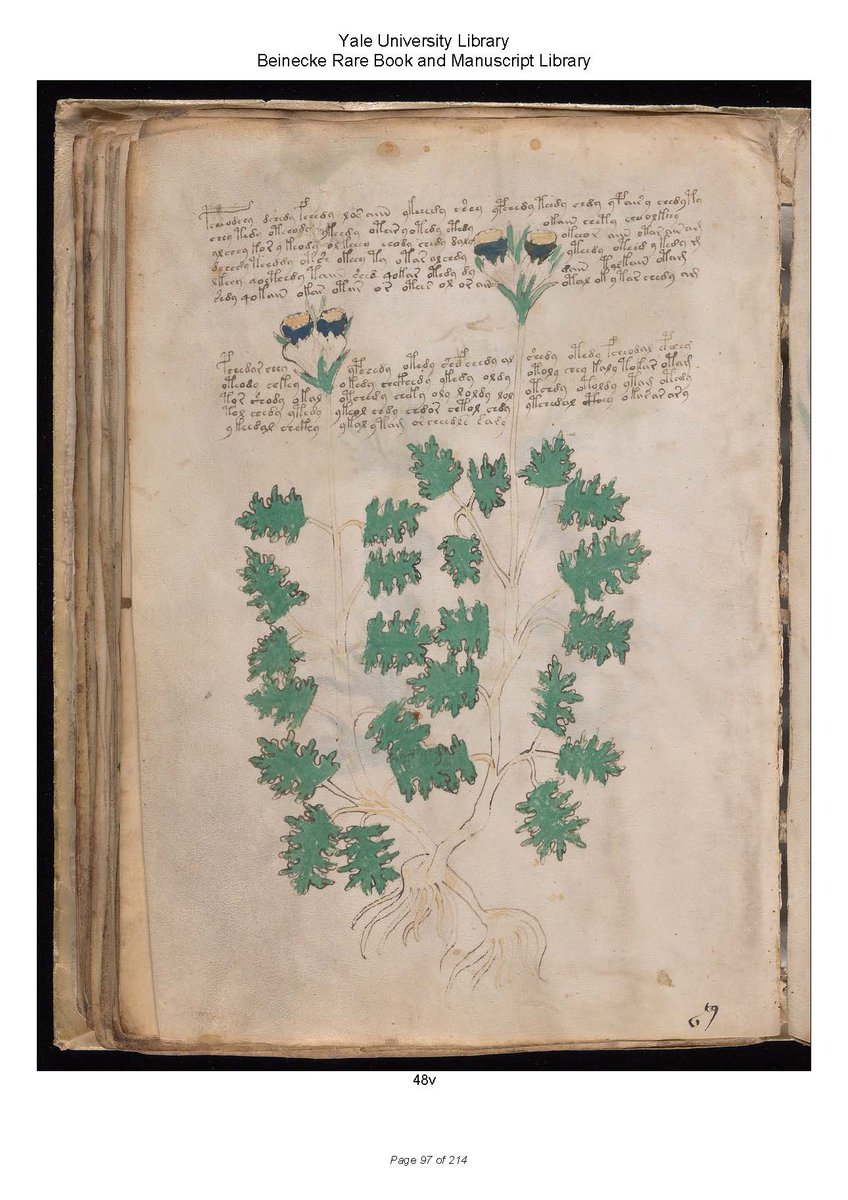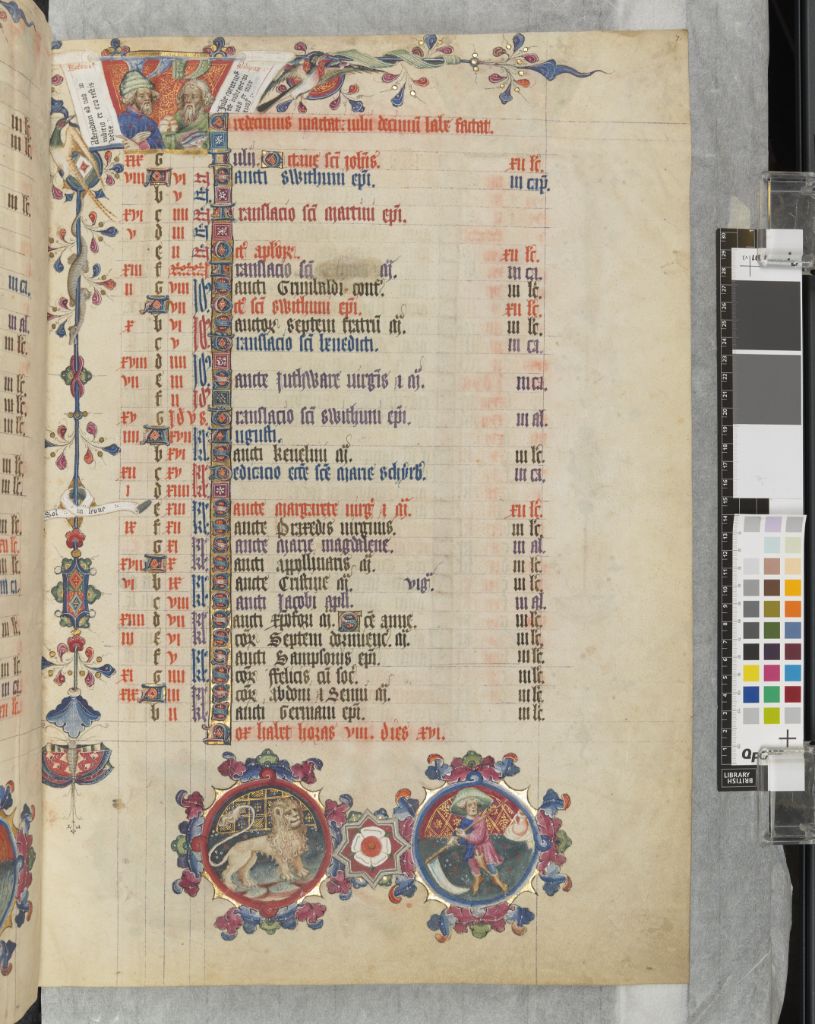
Executive Director, @medievalacademy; @simmonsslis prof; paleographer, codicologist, manuscript blogger; PhD; @brownuniversity @Yale alum
How to get URL link on X (Twitter) App



https://twitter.com/mssprovenance/status/1607679809953632257

 Tacitly editing images of fragments seems to be her MO: adding borders where there are none, cropping for consistency of size, inserting a mis=matched binding, adding fake flyleaves, colorizing b/w images. How can readers trust such a deceptive author?
Tacitly editing images of fragments seems to be her MO: adding borders where there are none, cropping for consistency of size, inserting a mis=matched binding, adding fake flyleaves, colorizing b/w images. How can readers trust such a deceptive author?

https://twitter.com/mssprovenance/status/16070216873876111372) If there's are missing leaves, show us where it is by indicating lacunae, as in this screenshot of my own work on the Beauvais Missal:


 Am now looking for an excuse to use the expression "I don't give two whoops in a rain barrel!"
Am now looking for an excuse to use the expression "I don't give two whoops in a rain barrel!"

 1. First things first. The #Voynich manuscript (VMS from now on) is a real object. Please always keep that in mind! It is a medieval manuscript (more on that in a minute) that belongs to the @BeineckeLibrary at Yale University, where it has been MS 408 since it was given in 1969.
1. First things first. The #Voynich manuscript (VMS from now on) is a real object. Please always keep that in mind! It is a medieval manuscript (more on that in a minute) that belongs to the @BeineckeLibrary at Yale University, where it has been MS 408 since it was given in 1969. 

https://twitter.com/lisafdavis/status/1544262870304694274Step 1: identify recto & verso. Generally a straightforward task…look for the binding holes (i.e. the gutter), which, in a manuscript that reads left -> right will be on the left of the recto side. In this case, the leaf is heavily trimmed on all sides, so no binding holes!


 We all know about the two dominant numeral systems in the European Middle Ages: Roman numerals and Arabic numerals. Roman numerals are good for labeling and expressing a single number like a date, but Arabic numerals won the fight for numerical supremacy...
We all know about the two dominant numeral systems in the European Middle Ages: Roman numerals and Arabic numerals. Roman numerals are good for labeling and expressing a single number like a date, but Arabic numerals won the fight for numerical supremacy...

 As I mentioned in yesterday's absolutely chaotic thread (sorry, was trying to simultaneously board a plane and Tweet, always a bad idea), the branches at the bottom of ff. 12v/13 redirect all over the manuscript, as the survivors of Troy scatter across the Mediterranean:
As I mentioned in yesterday's absolutely chaotic thread (sorry, was trying to simultaneously board a plane and Tweet, always a bad idea), the branches at the bottom of ff. 12v/13 redirect all over the manuscript, as the survivors of Troy scatter across the Mediterranean: 

 @sims_mss The Chronique is characterized not only by different histories in parallel columns, but also by a complex and lengthy genealogical diagram that records the lineage of humanity from Adam to the fifteenth century.
@sims_mss The Chronique is characterized not only by different histories in parallel columns, but also by a complex and lengthy genealogical diagram that records the lineage of humanity from Adam to the fifteenth century. 

https://twitter.com/leoba/status/1503757248228691971For example, here's a quire from August of the Sanctorale section. I've found 5 of the original 8 leaves of the quire, including two formerly-conjoint bifolia (in bright green):


 digi.vatlib.it/view/MSS_Vat.l…
digi.vatlib.it/view/MSS_Vat.l…

 The character we know as the ampersand [&] is used in nearly every Latinate language as a stand-in for the word [and]. But it didn’t start life as an abbreviation. It is actually a ligature, a Latin combination of two letters: [e] and [t], or [et], which in English means [and].
The character we know as the ampersand [&] is used in nearly every Latinate language as a stand-in for the word [and]. But it didn’t start life as an abbreviation. It is actually a ligature, a Latin combination of two letters: [e] and [t], or [et], which in English means [and]. 

 We’ll start in Rome, then jump up to the British Isles before heading back to the Continent. Buckle up, ‘cause here we go!
We’ll start in Rome, then jump up to the British Isles before heading back to the Continent. Buckle up, ‘cause here we go!


 Among the most unusual symbols in the manuscript are these, known to Voynichologists as “gallows.” There are four, classified by the number of legs and the number of loops. For convenience, we call them (l-r, t-b) f, p, k, t.
Among the most unusual symbols in the manuscript are these, known to Voynichologists as “gallows.” There are four, classified by the number of legs and the number of loops. For convenience, we call them (l-r, t-b) f, p, k, t. 

https://twitter.com/BeineckeLibrary/status/1433247053023432705The story of the map's time in New Haven is fascinating. In the 1960s, the Italian-American community was furious that the map, when thought to be authentic, "proved" that other explorers from Europe had crossed the Atlantic before Columbus (gasp!) (nvm that we knew that already)

https://twitter.com/edearp7/status/1381021868828852227
 1) Have you done the reading? If not, you’d better. There are actual factual things known about this manuscript, and if you’re solution isn’t consistent with those facts, then forget it. Here come some facts:
1) Have you done the reading? If not, you’d better. There are actual factual things known about this manuscript, and if you’re solution isn’t consistent with those facts, then forget it. Here come some facts:


 This manuscript is a collection of Saint’s Lives and begins (f. 2r) with a visual table of contents: Gottschalk presenting his finished book to the Virgin and Child, with saints around the border. St. Nicholas is in the center right, as Bishop of Myra.
This manuscript is a collection of Saint’s Lives and begins (f. 2r) with a visual table of contents: Gottschalk presenting his finished book to the Virgin and Child, with saints around the border. St. Nicholas is in the center right, as Bishop of Myra. 
